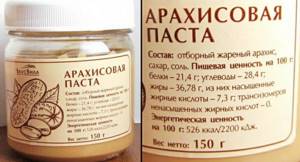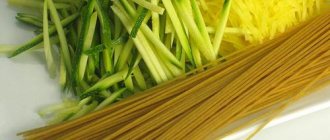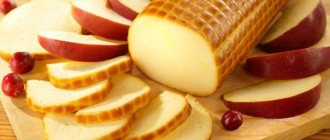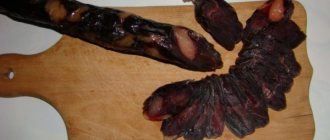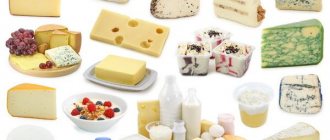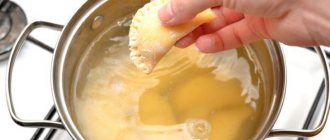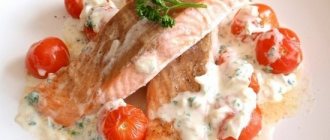Quick answer: the average calorie content of pasta is 112 kcal per 100 grams of product (boiled premium grade). Read all other numbers below.
Modern housewives know many ways to prepare pasta, which can be part of first courses, serve as a full-fledged side dish, or be part of intricate salads. But there is one factor that forces many people to limit the number of such dishes in their menu - the calorie content of pasta.
At the same time, nutritionists claim that some types of pasta will not harm your figure at all. Moreover, even special dietary menus have been developed that include this product. Let's figure out what pasta you can eat when losing weight and how to cook it correctly when fighting excess weight.
Kinds
Today, there are more than 350 forms of pasta, from which hundreds of different dishes are prepared. Depending on the shape, pasta is divided into types, the main of which are presented below.
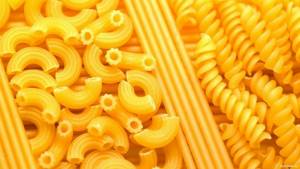
| Name | Description |
| Spaghetti | Long pasta with a round cross-section with a diameter of 2 mm and a length of about 13 cm. Used cooked as an independent dish, or in combination with vegetables, meat, and fish. |
| Vermicelli | Thin, short pasta with a round cross-section and a diameter of 1.6 mm, used for preparing cold dishes or casseroles. |
| Capellini | Pasta with a diameter of about 0.88 mm and a length of up to 15 cm. They are similar to spaghetti, but have a thinner base. Pasta is used as a dressing for meat and vegetable broths, as well as for making pasta. |
| Fettuccine | Thin flat strips of dough with a diameter of 7 mm. The product is used to make pasta or soups. |
| Tagliatelle | A type of noodles in the form of thin strips with a diameter of 5-8 mm, formed from egg dough. The product acts as a ready-made dish with the addition of thick sauces made from beef, pork and veal. |
| Caserecce | Short pasta in the shape of a twisted Latin letter S, 5-6 mm long. |
| Penne | Pasta in the form of feather tubes, 10 mm in diameter and 4 cm in length. The boiled product is served as a separate dish, seasoned with sauce, or used to prepare salads. |
| Conciglione (shells) | Large shell-shaped pasta that is used to make pasta or used for stuffing with minced meat, vegetables or cheese. |
Macaroni and cheese: calories per 100 g
Cheese is a product that contains approximately 40-50% fat, which is unacceptable for women who are on a diet.
Macaroni and cheese, calorie content per 100 g:
- Cheese significantly increases the calorie content of the dish. 100 g of pasta with cheese contains approximately 300 kcal.
- Thus, a serving will contain 900 kcal.
- This is a very high number, so it is unacceptable to add cheese to pasta if you are watching your diet.
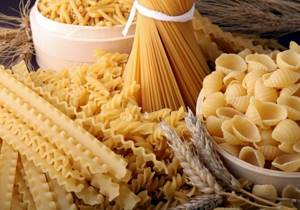
Range
Benefit
Boiled pasta from durum wheat is often included in the diet, due to the fact that they are a valuable source of complex carbohydrates.

Whole grain pasta, unlike regular pasta, is made from crushed wheat grains that cannot be sown.
This way, the large grain shells, which contain antioxidants and B vitamins, retain their benefits. Whole grain flour also contains crystalline starch, which retains protein, so the product is well absorbed and provides the body with the necessary energy.
Other beneficial properties of pasta:
- contain unsaturated fats, which are easily broken down and do not have the ability to accumulate;
- contain fiber, which improves intestinal function;
- rich in slow sugars that replenish glycogen stores in muscles, thereby ensuring long-term saturation.
How to reduce the calorie content of pasta?
Pasta lovers should not be upset that they can ruin their figure. There are several techniques that will help reduce the calorie content of your favorite dish.
How to reduce the calorie content of pasta:
- Not long ago, British doctors conducted a very interesting and unusual experiment. The main source of carbohydrates found in white wheat varieties is starch. Immediately after preparing the product, it is quickly absorbed, instantly digested, and converted into glucose.
- However, if you cool the pasta and then reheat it again, the amount of starch that is absorbed in the body drops by half. Regular starch turns into one that is not digestible. In its structure, it is very similar to fiber, and in transit passes through the intestines, cleansing it. Therefore, we recommend preparing casseroles from yesterday’s pasta, adding eggs, sour cream and vegetables.
- If you add vegetables to pasta, this helps reduce calories and increase the concentration of fiber in the finished dish. Fiber is able to partially absorb starch and remove it from the body. Avoid eating freshly cooked pasta; let it cool completely and then reheat it. A clever trick will eliminate the spike in glucose that occurs when eating pasta made from bread flour.
- Starch is a compound that consists of chains of sugars. As they enter the small intestine, these chains are broken, releasing sugar particles. This is exactly how simple and easily digestible starch behaves in the small intestine. However, after cooling the pasta and reheating it, some of these chains become denser. Thus, it is not converted into sugar particles in the small intestine. When it enters the large intestine, starch undergoes fermentation. The large intestine contains about a kilogram of various microorganisms that absorb nutrients. As a result of fermentation, starch is converted into useful amino acids that are necessary for the existence of the body.

Pasta
Harm
Boiled pasta from durum wheat, consumed in its pure form without adding fatty sauces, is a dietary product. However, the calorie content of the finished dish almost doubles if you combine pasta with dressings based on fatty meats, cheese and cream.
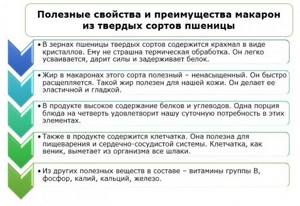
Such combinations of products are not suitable for the diet of a person losing weight and significantly slow down the process of losing weight. Frequent consumption of pasta is contraindicated for people suffering from chronic constipation.
PP version of Bolognese pasta
To prepare the original dish, minced pork or beef is used, fried with the addition of olive oil. To significantly reduce the calorie content of pasta, it is enough to find an alternative to some products and adapt the recipe to your dietary intake.
Composition of ingredients
- chicken breast – 500 g;
- durum wheat pasta – 400 g;
- medium-sized onion – 1 pc.;
- medium-sized carrots – 1 pc.;
- celery – 1 stalk;
- tomato – 1 pc.;
- olive oil – 1 tbsp. l.;
- Provençal herbs - to taste;
- salt - to taste.
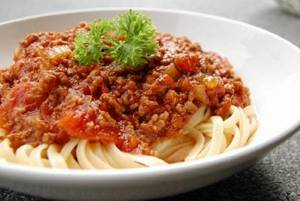
Chicken fillet can be replaced with turkey fillet - the minced meat will be drier in this case. In order to give it juiciness, just add a little water during the stewing process.
Step-by-step cooking process
- Chicken fillet must be cut into large pieces and passed through a meat grinder or chopped using a blender.
- Onions and celery stalks should be cut into small cubes, grate the carrots on a fine grater.
- Place the pan on the fire, pour in 1 tbsp. l. olive oil and add chopped vegetables. Fry the mixture for 3-5 minutes, stirring constantly.
- Pour boiling water over the tomato and remove the peel, then cut into small cubes and add to the vegetables; add salt to the vegetable mixture.
- Add the minced chicken and distribute it over the pan, breaking up any lumps. Pour 50 ml of water into the resulting mixture, reduce heat and cover the pan with a lid. Simmer for about 15 minutes. If necessary, add another 50 ml of water.
- While the dressing is being prepared, you need to prepare the pasta. Place spaghetti in boiling salted water and cook until tender.
- Place the boiled spaghetti on a plate and spread the prepared dressing on top. Sprinkle the dish with Provençal herbs and add a sprig of rosemary.
Dietary cooking methods
It is important how to cook pasta: not only the taste of the dish, but also its calorie content depends on it. And in this case you need to be attentive to every little detail.
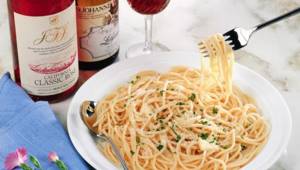
- First of all, choose the right container for cooking. You need to choose a pan with thick walls and a large size. For the average consumer, about one hundred grams of dry pasta is enough (the finished portion will be three hundred grams).
- If you have set a goal to lose weight, then the volume of pasta per meal should be limited to the amount of dry product that fits in your palm. Usually this is about 50 grams, which will correspond to a finished portion size of about 170-180 grams.
- Water should be taken at the rate of one liter for every hundred grams of pasta. This much is necessary for the pasta to retain its dense structure, since spaghetti, horns and other products can become sticky in a small amount of water. But expect that it will take a lot of time to boil such a volume of water.
- As soon as you see that the water begins to boil, add salt to it - about ten grams per liter, but you can do less if your goal is to lose weight. When the water begins to bubble more actively, it’s time to throw in the pasta.
- If you decide to cook spaghetti, you don't have to break it so that it fits completely into the pan. Just wait a little: they will soften underneath. And press down on the dry top while slowly plunging the rest of the pasta into the boiling water.
- After this, cover the pan with a lid and increase the heat until the water boils again. Once this happens, remove the lid and reduce the heat until the water is just bubbling. This temperature must be maintained until the pasta is ready. Stir them occasionally to avoid sticking to the bottom of the container.
Pay attention to the pasta packaging to determine the cooking time. As a rule, this takes from seven to twelve minutes.
How to make pasta less calorie? You need to subtract a couple of minutes from the time indicated on the product package to make the pasta slightly undercooked. This way you can reduce the glycemic index of the product to 40 units.
Actually, in Italy all pasta is prepared this way - the core of the pasta should be slightly hard so that a person needs to make a little effort to experience it.
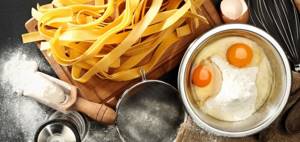
The glycemic index shows how foods affect blood glucose levels after they are absorbed by the body. The lower this figure, the better for human health.
For comparison, cooked pasta has a glycemic index of 50 units. That is, in this way it is possible to reduce this figure by 20%.
Dietary pasta with herbs
Pasta made from durum wheat goes well with cheese and herbs. This version of the dish can be used as dinner. To prepare pasta, it is better to use spaghetti or fettuccine nests.
Composition of ingredients
- fettuccine nests – 500 g;
- parsley – 100 g;
- lemon juice – 30 ml;
- parmesan – 50 g;
- 1 clove of garlic;
- salt – ½ tsp;
- olive oil – 1 tbsp. l.
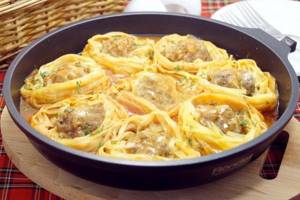
If Parmesan is not available, it can be replaced with any light hard cheese.
Step-by-step cooking process
- First you need to prepare the ingredients. The parsley needs to be coarsely chopped and the parmesan grated on a fine grater. Squeeze juice from half 1 lemon.
- Place all the chopped ingredients in a blender bowl, add garlic, lemon juice and olive oil. Grind the mass to a pasty state.
- Place a pan of salted water on the fire and bring to a boil. Then lay out the fettuccine nests and boil until tender for 5 minutes.
- Drain the water from the boiled pasta and combine it with the prepared sauce, mix thoroughly. Serve the dish hot, sprinkled with grated Parmesan.
Navy pasta: calorie content per 100 g
In Russia, one of the most favorite recipes is naval pasta. This is a dish made from boiled pasta with the addition of minced meat, fried with onions. Almost everyone knows how this dish is prepared, but few have thought about its calorie content.
Navy pasta, calorie content per 100 g:
- When frying minced meat, a large amount of vegetable oil is consumed, which significantly increases the calorie content of the dish. If the dish is prepared using minced pork and beef, then this product contains up to 30% fat.
- This also negatively affects the benefits of the product and increases the fat content. On average, 100 grams of navy pasta contains approximately 300 kcal. Thus, one serving of naval pasta contains 800-900 kcal.
- This is a huge figure, which is equal to a little more than half the daily caloric supply for a woman. Therefore, this dish should in no way be considered dietary, and should not be used while on a diet.

Paste
Spaghetti with champignons
Boiled pasta from durum wheat (the calorie content of the product allows it to be used in a dietary diet) goes well with mushroom dressings. To prepare pasta with mushrooms, use champignons, oyster mushrooms or chanterelles.
Composition of ingredients
- 100 g spaghetti;
- 150 champignons;
- 1 medium sized onion;
- 1 clove of garlic;
- 2 tbsp. l. sour cream 15%;
- 1 tbsp. l. olive oil;
- salt to taste
Sour cream can be replaced with cream with a fat content of 10-20%, and any type of pasta can be used instead of spaghetti.
Step-by-step cooking process
- The champignons need to be rinsed under water, wiped dry with a paper napkin or towel, and then cut into thin slices.
- Chop the onion with a knife and finely chop the garlic clove.
- Grease a hot frying pan with olive oil and add onions. You need to sauté the vegetable until translucent, then add the chopped mushrooms and simmer the mixture under the lid for about 10 minutes. Dilute sour cream with 50 ml of water and salt, add to the mushroom mixture. Simmer for another 2 minutes. The gas station is ready.
- Spaghetti should be boiled in salted water until tender. Place boiled pasta on a plate and add creamy mushroom dressing.
Boiled pasta: calorie content per 100 g
Many people believe that pasta is a harmful product that should not be consumed on a diet. In fact, this is not an entirely true statement.
Boiled pasta, calorie content per 100 g:
- If we take into account the calorie content of dry pasta, then per 100 g there are approximately 330-340 kcal. To get 100 g of boiled, you will have to spend only 30 g of raw. Thus, calorie content is reduced by two to three times.
- This rule applies to shaped items such as horns, shells, feathers, and spirals. If we are talking about noodles or spaghetti, then they boil down during the cooking process less, about one and a half to two times. The calorie content of the finished product, such as spaghetti or vermicelli, is much higher than that of feathers and spirals.
- On average, 100 g of boiled pasta contains approximately 130 kcal. This applies to feathers and curly pasta. If it is boiled spaghetti or vermicelli, perhaps noodles, then the calorie content will be approximately 200 kcal per 100 g.
- To eat, a person needs approximately 250-300 g of products. Thus, one serving will contain approximately 330-350 kcal. This applies exclusively to pasta. Thus, pasta without additives can be considered a dietary product. But in most cases, the product has a lean, dry taste, and such products are usually flavored with something during preparation. Butter, grated cheese, sour cream, mayonnaise and various sauces are added as additives.

Calorie table
Shrimp pasta
The combination of pasta with seafood is a win-win option for a delicious dish. You can supplement the boiled pasta not only with shrimp, but also with sea cocktail, octopus or squid.
Composition of ingredients
- 200 g penne pasta;
- peeled shrimp – 150 g;
- large red onion – 1 pc.;
- olive oil – 3 tbsp. l.;
- any hard cheese – 50 g;
- salt – ½ tsp.
Step-by-step cooking process
- The onion must be finely chopped into cubes, and the hard cheese must be grated on a fine grater.
- Heat a frying pan greased with olive oil and add chopped onion. Fry it for 2 minutes over medium heat.
- When the onion becomes transparent, add shrimp and salt to it, simmer the mixture under the lid for about 5-7 minutes.

- After the shrimp are ready, add grated cheese to the pan and mix thoroughly. After 2 minutes, remove the pan with the mixture from the heat.
- Penne should be boiled in salted water until half cooked. Then add the boiled pasta to the frying pan with the seafood, mix thoroughly and simmer over low heat under the lid for about 2 minutes.
Pasta with butter: calorie content per 100 g
Quite often cheese and butter are added to pasta. Of course, this increases calorie content, but significantly improves the taste of the dish. It all depends on the amount of cheese, butter, and their fat content.
Pasta with butter, calorie content per 100 g:
- On average, the calorie content of pasta with butter is 180 kcal per 100 g. After all, 100 g of butter contains 700 kcal.
- Thus, even if you add only 10 grams of butter to a plate, you will increase the calorie content of the entire serving by 70-80 kcal.
- To prevent the pasta from sticking together, cooks recommend adding a tablespoon of vegetable oil to the water during the cooking process.
- This significantly reduces calories because you don't have to add extra fat.
Pasta
Pasta salad with vegetables
Boiled pasta from durum wheat (the calorie content of the product is halved after cooking) can be used to prepare light vegetable salads.
Composition of ingredients
- fusilli (spirals) – 100 g;
- cherry tomatoes – 5 pcs.;
- sweet onion – 1 pc.;
- dill greens – 3 sprigs;
- olive oil – 2 tbsp. l.;
- lemon juice – 2 tbsp. l.;
- garlic – 2 cloves;
- salt to taste;
- Provencal herbs

To make the salad look more interesting, colored spirals are used to prepare it.
Step-by-step cooking process
- Pasta should be boiled in salted water until tender. This usually takes 5-7 minutes.
- Cherry tomatoes must be cut into halves, and the onion must be finely diced. 2 heads of garlic need to be passed through a press.
- Next, you can start preparing the sauce. In a separate container you need to combine lemon juice, olive oil, chopped garlic and chopped dill. The resulting mixture should be supplemented with salt and Provençal herbs.
- In a deep bowl, mix boiled pasta, tomatoes and onions, add salad dressing and mix thoroughly. The finished dish can be sprinkled with grated cheese.
Origin theory
Several countries at once claim to be called the real ancestors of pasta. Because of this, historians have been trying for years to find the real source, but progress in this field is moving extremely slowly.
Content:
- Origin theory
- Useful menu item
- High calorie content
- Guide to variety
- Guarding the figure
One of the most legendary stories on this subject is the story of the little daughter of a tavern owner who flourished in the 16th century. The little girl played with the dough cut for noodles, creating fancy bows and rings.
The father liked his daughter’s creativity, and he decided to develop this idea by offering visitors an unusual format for noodles that were popular in that era. The common people received the new product very well, which glorified the enterprising catering owner. His name was Marco Aroni. In honor of the smart man, they named his signature dish, which is now often prepared in a slow cooker to save time.
According to another theory, Marco Polo should be thanked for the spread of the unusual dish, who brought the recipe from the Middle Kingdom during his next expedition. Since then, a literal cult of pasta with cheese and other ingredients has settled in Italy. But to this day there is no exact evidence that Marco Polo told Italians about the delicacy so beloved by many today.
For a while, talk about who should give the palm of discovery subsided, until archaeologists got to the excavations of Etruscan tombs. At the burial site, experts discovered strange needles, which, upon closer examination, turned out to be tools for creating pasta. But since this is also just a guess by curious researchers, no one has decided to say for sure.

Identical disputes revolve around the origin of the term itself. According to some data, the word comes from the cradle of languages - Greek. Literally translated, makaria means “bestower of happiness.” According to other information, the Sicilians should be considered the authors of the term. They have an archaic verb that means handling dough, and it sounds very similar. But the most amazing thing is that if you just say the magic word “pasta” in any country, most people will understand what you are talking about, even with an eye to the accent.
Spaghetti with canned tuna
A dressing with the addition of canned tuna can be added not only to spaghetti, but also to any other pasta.
Composition of ingredients
- spaghetti – 300 g;
- canned tuna in its own juice – 1 can;
- tomatoes – 1 pc.;
- bell pepper – 1 pc.;
- onion – 1 pc.;
- hard cheese – 30 g;
- olive oil – 2 tbsp. l.
Step-by-step cooking process
- Tomatoes and onions must be cut into small cubes, and bell peppers into half rings.
- Grease a frying pan with olive oil, put on fire and add chopped vegetables. Fry the mixture over medium heat for 3-5 minutes, stirring vigorously.
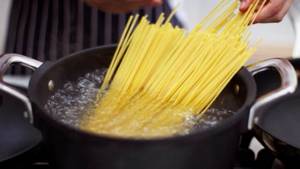
- Canned tuna should be removed from the can, lightly mashed with a fork and added to the fried vegetables. Simmer covered for about 5 minutes.
- Boil the spaghetti in salted water until tender. Add the pasta to the pan with the tuna and vegetables and stir well. Serve the dish with grated cheese.
How many calories are in pasta soup?
Soup is the first course, including meat, vegetables, and cereals. The calorie content of soup varies widely, depending on the amount of fat and carbohydrates.
How many calories are in pasta soup:
- The calorie content of soup prepared with chicken broth using chicken backs and thighs is 57 kcal per 100 g.
- In addition, the composition includes carrots, onions, potatoes, pasta and chicken breast. Please note that the amount of pasta for a two-liter pan is 100 g.
- In this case, the frying is not prepared; carrots and onions are added to the broth and boiled in it.
- The calorie content will increase significantly if you add fried onions and carrots to the soup.
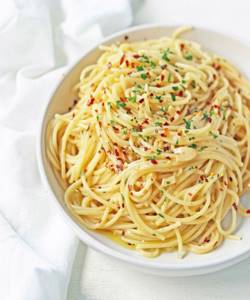
Spaghetti
Menu for diet
To make the weight loss process comfortable and not have a negative effect on the body, it is important to choose a balanced, healthy diet, which consists of a list of essential products:
- vegetables;
- fruits;
- meat;
- seafood;
- whole grain pasta;
- dairy products;
- cereals for making porridge;
- vegetable oils.
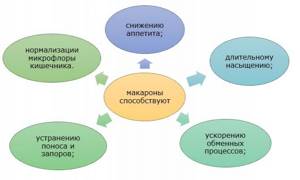
Here are several diet options for weight loss in which you can eat boiled pasta at any meal:
Option 1
- Breakfast: 200 g of oatmeal in water with the addition of ½ banana and 15 g of coconut.
- Snack: a handful of walnuts (20 g) and 1 green apple.
- Lunch: 150 g shrimp pasta, supplemented with 150 g spinach salad, cucumbers and 2 tbsp. l. olive oil.
- Dinner: light pumpkin soup.
Option 2
- Breakfast: 1 serving of cheesecakes (200 g cottage cheese, 1 egg, 30 g semolina, vanillin on the tip of a knife).
- Snack: light fruit salad dressed with unsweetened yogurt (½ apple, ½ banana, 1 tangerine cut into cubes and mix with yogurt).
- Lunch: chicken breast stuffed with cottage cheese and herbs.
- Dinner: 200 g of dietary pasta with herbs.
In order to choose truly high-quality pasta, you need to pay attention to the following product characteristics:
- characteristic natural yellowish or golden color;
- the presence of 11 g of protein per 100 g: the higher the indicator, the better the quality of the pasta;
- the presence of a label indicating “from durum wheat”;
- absence of a large number of crushed pasta elements at the bottom of the package.
After quality pasta has been carefully selected, it must be properly cooked so that it retains its shape and also does not lose its beneficial properties.

It is important to follow these steps:
- during cooking, add pasta exclusively to boiling water, observing the ratio: 100 g of dry product per 1 liter of liquid;
- it is necessary to boil pasta in a container with a volume of at least 3-4 liters;
- the average cooking time for durum wheat pasta is 7-9 minutes;
- Ready-made pasta does not require rinsing under running water; just drain the excess liquid from the container and mix well.
Boiled pasta from durum wheat has maximum beneficial properties when prepared “al dente” and retains its elasticity even when cooked. It must be remembered that the calorie content and glycemic index of the finished product depend on how much the pasta is boiled: the softer the dough of the boiled pasta, the higher the calorie content.
Pasta diet for a slim figure
If we limit ourselves to these flour products without adding spices and sauces to them, then their calorie content allows us to consider this dish a dietary one. They are a source of large amounts of carbohydrates, so it is advisable to consume them before four o’clock in the afternoon, when our metabolism is at its peak.
Towards evening, the metabolic rate decreases significantly, which is why it is recommended to have dinner with protein-rich dishes and avoid high-carbohydrate foods. The body is not able to fully process carbohydrates received in the evening, and therefore it immediately “preserves” them in fat deposits.
- It is important to follow the rules of separate nutrition, according to which pasta should not be consumed together with meat products or fats (which include, in particular, cheese).
- In tandem with vegetables and mushrooms, pasta is perfectly absorbed by the body. From this point of view, the ideal dish would be a casserole of eggs, pasta, fresh bell pepper and cauliflower. The average calorie content of such a dish, which is suitable for breakfast, is about 140 kcal per 100 grams.
- Pasta with fresh vegetable salads is also recommended because it accelerates the process of burning fat cells and stimulates the normalization of metabolism. This means that the pasta dish is absorbed by the body faster and better.
- Don't be afraid to season them with hot spices (even black pepper, despite its high calorie content), as they speed up metabolism. Pasta additives such as garlic and mustard also work for this purpose.
- But try to reduce your salt intake, because it greatly inhibits water metabolism in the body, which leads to excess weight, as well as the appearance of swelling.
In order not to harm your figure, you should not indulge yourself with pasta every day, but you can eat such dishes twice a week. Although even a complete pasta diet has already been developed, suggesting that in one month of following it it is possible to lose five kilograms.
This regime assumes that a person can eat no more than three hundred grams of these tasty products per day (the indicated weight assumes the mass of the dry product). You won’t have to go hungry on such a diet, since spaghetti is quite nutritious even without various additives.
For dietary nutrition, spaghetti should be cooked with a spoonful of olive oil added to the water. But you cannot add oil or sauces to prepared pasta. If desired, hot spaghetti can be topped with egg white.
Also, the menu should be supplemented with lean varieties of meat and fish - up to one hundred grams per day. You can also drink a liter of low-fat kefir and eat about two hundred grams of cottage cheese per day. Make sure you consume no more than 1,300 kilocalories daily.
To enhance the effect of the diet, you need to regularly engage in some type of physical activity!
Another constant requirement is maintaining water balance, for which you need to drink one and a half to two liters of water daily. But don't be afraid of such a quantity. According to the World Health Organization, these two liters account for all the liquid consumed by a person throughout the day.
In the case of a diet, in addition to water, you can drink green tea without sugar or herbal decoctions. Also count them in these two liters, and take the remaining amount with clean still water.
Due to poor nutrition, it is better to drink a vitamin complex at the same time. You cannot follow this diet for more than a month. Since it is a type of strict diet, it is not recommended to resort to it more than once every six months.
Vitamins
Of the fat-soluble vitamins, only vitamin E is present in boiled noodles. Of the water-soluble vitamins, there are vitamins B1, B2, B3 (PP), B4, B5, B6 and B9.
>»> >»> >»> >»> >»> >»> >»> >»> >»> >»> >»> >»> >»> >»> >»> >»> >»>
| Vitamins, content | Share of daily value per 100 g | |
| Vitamin A | 0.0 µg | 0,0% |
| Beta carotene | 0.0 µg | 0,0% |
| Alpha carotene | 0.0 µg | 0,0% |
| Vitamin D | 0.0 µg | 0,0% |
| Vitamin D2 | n/a | 0,0% |
| Vitamin D3 | n/a | 0,0% |
| Vitamin E | 0.1 mg | 0,4% |
| Vitamin K | 0.0 µg | 0,0% |
| Vitamin C | 0.0 mg | 0,0% |
| Vitamin B1 | 0.0 mg | 1,7% |
| Vitamin B2 | 0.0 mg | 1,5% |
| Vitamin B3 | 0.4 mg | 2,5% |
| Vitamin B4 | 6.4 mg | 1,3% |
| Vitamin B5 | 0.1 mg | 2,2% |
| Vitamin B6 | 0.0 mg | 3,8% |
| Vitamin B9 | 7.0 mcg | 1,8% |
| Vitamin B12 | 0.0 µg | 0,0% |
Ingredients of boiled pasta:
Vitamins:
| Vitamin: | IN 1 | AT 2 | AT 4 | AT 5 | AT 6 | AT 9 | RR | E |
| in mg. per 100 grams | 0.105 | 0.044 | 10.4 | 0.4 | 0.077 | 0.005 | 0.7 | 0.6 |
Minerals:
| Mineral: | Calcium | Phosphorus | Magnesium | Potassium |
| in mg. per 100 grams | 15 | 86 | 29 | 43 |
Products made from soft wheat contain very few healthy carbohydrates and fiber - practically nothing but empty calories. However, you shouldn’t blame flour for everything.
A 100-gram serving of any prepared pasta usually contains not 175 kcal, but much more. Where does the surplus come from? From all kinds of additives, gravies, sauces. We sometimes don’t take them into account, but the butter, cheese, and mayonnaise that we willingly flavor pasta with can turn out to be higher in calories than the main dish.
Premium quality boiled pasta
Composition and beneficial properties of premium boiled pasta
The vitamins contained in cooked premium pasta are not destroyed during cooking. Flour initially contains B vitamins involved in many biochemical reactions: B1 or thiamine, which promotes the breakdown of nutrients, B2 or riboflavin, which regulates the condition of the skin and affects vision, B6 or pyridoxine, which regulates the formation of blood cells and supports immunity, B9 which promotes the formation of nucleic acids. acids It especially releases vitamin PP in quantity, which is necessary for the health of the skin (calorizer).
Among the macroelements in pasta there is a lot of sodium, which regulates the permeability of cell membranes. Of the microelements, the amount of potassium and magnesium involved in the absorption of glucose and the transmission of nerve impulses is noticeable. Sulfur and phosphorus in pasta are absorbed and affect the quality of hair, teeth and bones. Microelements regulate the functioning of enzymes and participate in hematopoiesis. Their deficiency causes disruption of nervous activity and decreased immunity.
Calorie content of premium boiled pasta: The calorie content of premium boiled pasta is 112 kcal per 100 grams of product.
The nutritional value
Pasta made from durum wheat flour contains a large percentage of vitamin B1 in its composition.
This vitamin is very important for maintaining energy in the human body.
The amount of protein in this type of product is enough to remove the fat layer, not muscle mass.
This is an extremely useful property of protein, extremely useful for those who want to say goodbye to extra pounds forever.
But this factor applies only to boiled pasta, without the addition of fatty sauces, cheeses with a high percentage of fat, minced pork, etc.
The fewer calories there are in the menu, the lower the calorie content of the finished dish.
The number of calories in them, made from durum wheat flour, is: 443.45 kcal.
The nutritional value:
This flour contains less gluten than regular flour.
They do not get soggy and hold their shape well during the cooking process.
Calorie content of boiled Macfa pasta: 345 kcal.
The nutritional value:
How to choose pasta?
To choose the most useful product, you need to know what should be included in its composition and what should not.
Main ingredients:
- sweet paste - roasted peanuts, sugar and salt;
- unsweetened - roasted peanuts and salt.
The presence of vegetable oil and sweetener (honey, corn syrup) is acceptable.
Peanut butter should not contain hydrogenated oil (canola, soybean). Such a product will be harmful to the body.
